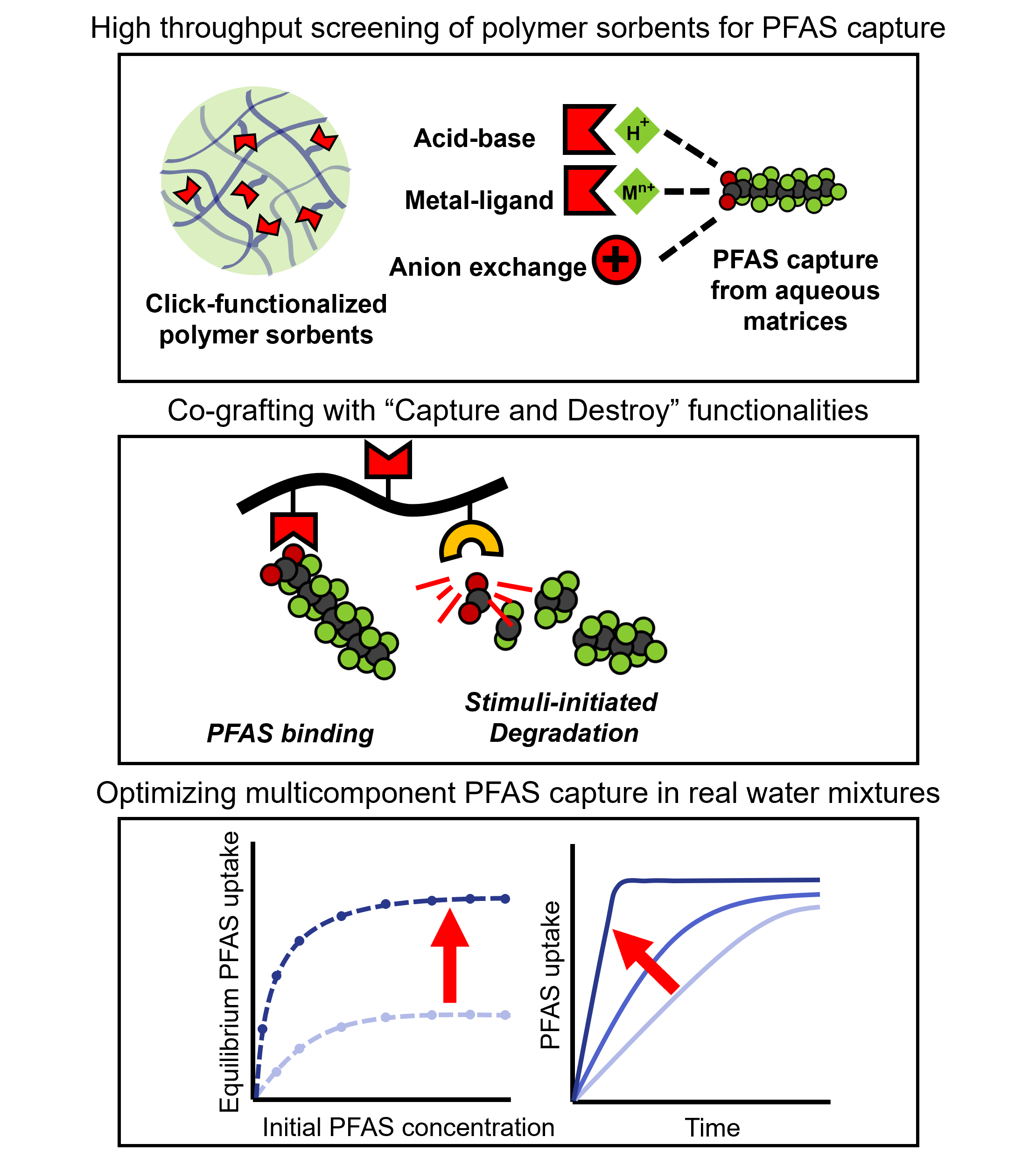Active areas of research
Our research aims to tackle Grand Challenges in clean water and energy production using innovative materials design for membranes and adsorbents coupled with a fundamental understanding of molecular transport in polymers.
Our research has been funded by the following grants and awards:
NSF CBET Interfacial Engineering Award No. 2427603 (PI: Joshua Moon, Co-PI: Sergey Vasenkov; 2024-2027)
NSF CBET Interfacial Engineering Award No. 2343767 (PI: Joshua Moon, Co-PI: Austin Evans; 2024-2027)
UF Research Opportunity Seed Fund (PI: Joshua Moon, Co-PI: Austin Evans; 2024-2026)
Army Research Office DURIP (PI: Austin Evans, Co-PI: Joshua Moon; 2024-2025)
Rational Design of Polymer Ionic Liquid Membranes through Uncovering Fundamental Gas Transport Mechanisms
(NSF 2427603)
Facilitated Transport Membranes (FTMs) offer promise for energy-efficient carbon capture but often suffer from poor stability and a tradeoff between CO2 permeability and selectivity. We aim to engineer new polymer membranes that minimize energy barriers for diffusion while increasing CO2 affinity, thus driving up separation performance. In collaboration with the Vasenkov group (UF CHE), we aim to uncover transport and diffusion mechanisms of click-functionalized FTMs across a wide range of length and timescales enabled by advanced NMR spectroscopy.
Engineering molecularly precise, sub-nanometer gas transport pathways in robust macrocycle membranes
(NSF 2343767)
An ideal gas separation membrane would contain ultra-thin nanopores that could perfectly separate different gases from each other while remaining extremely permeable. In collaboration with the Evans group (UF Chemistry), we are developing a new strategy for forming 2-dimensional polymer membranes with gas selective nanocavities built from aligned molecular rings called macrocycles. This project will uncover the underlying transport and mechanisms in these ordered ultrathin films.
Custom-tailored adsorbents for removing toxic PFAS from water
Persistent organic pollutants such as perfluoroalkyl substances (PFAS) are a major contaminant of concern for our drinking water resources. Our lab aims to leverage the versatility and modularity of “click” chemistry to design fit-for-purpose hydrogel membranes and adsorbents with functionality specifically tailored to capture and remove PFAS compounds from water. Initial results indicate the ability to remove >99% of perfluorooctanic acid at initial concentrations as low as 10 ng/mL (ppb) using fluorine-free hydrogel networks. Investigating adsorption kinetics and thermodynamics will provide a route to link molecular-level structure to PFAS separation performance.
Structure-dynamics-transport properties of Polymers of Intrinsic Microporosity (PIM) gas separation membranes
PIMs have emerged as a promising solution for efficient gas and vapor separation membranes due to high permeabilities and selectivities imparted by their rigid backbones. However, many PIMs remain susceptible to plasticization and physical aging and a loss of separation efficiency when separating complex gas/vapor mixtures. We aim to develop an in-depth understanding of the interplay between free volume, polymer dynamics, and transport properties in novel click-functionalized PIMs to enable development of advanced plasticization- and aging-resistant membranes by direct molecular design.





